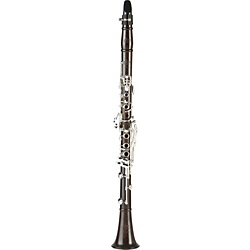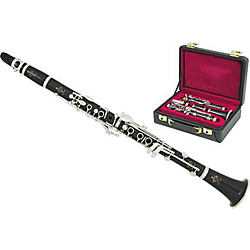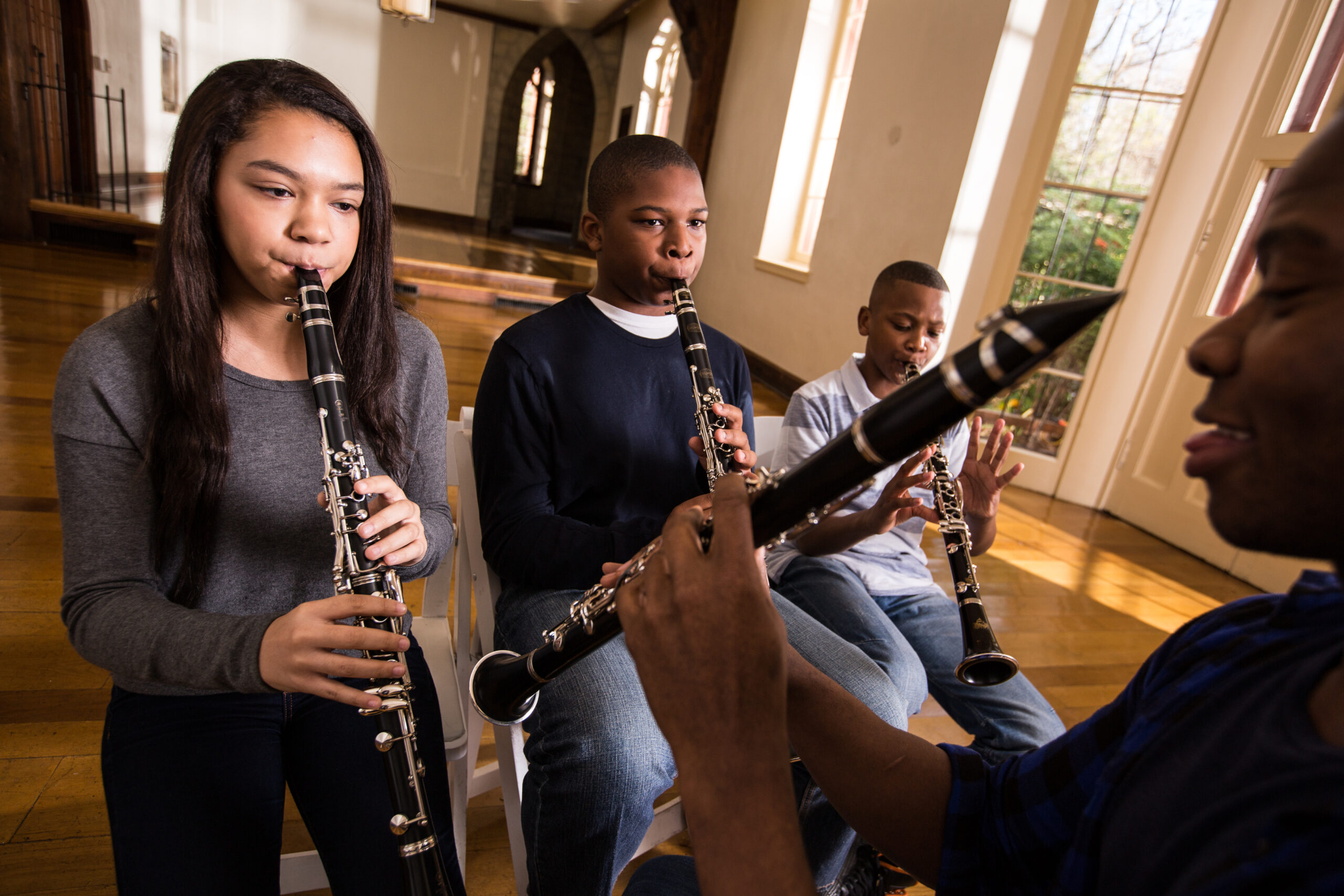July 24, 2015
Clarinet Buyer’s Guide


As students enter a school band or orchestra, finding the right clarinet is important. Whether it’s your child’s very first instrument or time for an upgrade, it’s a big decision with many things to consider. The musician’s age and skill level should be taken into consideration, as should the kind of use the instrument will be put through. From clarinet categories to body materials, this clarinet buyer’s guide will walk you through the buying process so you’ll have the information you need to choose the best clarinet for your child.
Clarinet Categories
Also referred to as level models, clarinets are typically categorized into three levels: student, intermediate, or professional. It’s important to know what these levels are so you can purchase the type of clarinet that best suits the skill level of your child. Student clarinets are usually reserved for those whose commitment to the instrument is unknown; if your child is just starting out we’d recommend this type of clarinet. Manufactured from ABS Resin, these clarinets are very durable and can easily withstand an entire season of marching band. Ideal for those who have been playing the clarinet for a few years, intermediate clarinets are made for those who want something a little more advanced than a beginner model, while professional models are reserved for those who are fully committed to the instrument.
Plastic or Wood?
Clarinets are chiefly manufactured from either plastic or wood. Student clarinets are usually made out of a plastic/rubber composite material that’s formulated to produce similar qualities as wood while being far more durable. Students and intermediate players usually opt for plastic clarinets, as they’re stronger and can easily withstand the trauma of marching band. Although wood clarinets produce a better sound, they also cost more, are more fragile, and are easily damaged by weather. If your child joins marching band and really enjoys the clarinet, you can always purchase them a wood clarinet down the line and have them use their original plastic clarinet exclusively for marching band practices and performances.


Key Materials
The keys on a clarinet will be plated with either nickel or silver and, in some cases, will be Hamilton plated. Nickel plate is durable, doesn’t tarnish as easily as silver, and has a somewhat shiny appearance. Surprisingly, it’s often preferred by professionals and is used on student and intermediate clarinets. Silver plating is heavier than nickel plating, and adds a bit of weight to the clarinet. As a result, the sound is slightly darker in tone than nickel. When compared to nickel, silver tarnishes much more easily and requires extra care. With proper care and maintenance, silver-plated keys can remain untarnished and beautiful throughout the life of the instrument. Hamilton plated is a blend of gold and silver offered by Yamaha, and gives the instrument a slightly golden look and a darker, more liquid sound.


Bore Design
How big or small the bore is on a clarinet affects the general feel of the instrument while in use. The larger the bore is the more difficult the clarinet is to play. If you’re purchasing a clarinet for a beginner or intermediate student, most experts would recommend searching for a clarinet with small bores. In general, they’re much easier for students to play and keep in tune. Medium-sized bores are the most common, as they offer a balance between focus and flexibility, while larger bores are more flexible in pitch and used by professionals. In addition to size, bore shape is also an important factor to consider. Cylindrical-bore clarinets are flexible and provide a large sound with great volume, while polycylindrical-bore clarinets are less flexible but have superior intonation and more ring.
Renting vs. Purchasing; Used vs. New
In many cases, purchasing a gently used clarinet is fine. When purchasing a refurbished or like-new clarinet, make sure you won’t have to pay for expensive repairs on top of the price of the clarinet. While sites like eBay are chock full of used clarinets, you should proceed with caution- since you can’t see the instrument and you don’t personally know the seller, only purchase from eBay as a last resort. In most cases, purchasing a new clarinet is your best bet. If you aren’t sure about your child’s commitment to the instrument, renting a clarinet is a viable option. In some cases, you can even participate in a rent-to-own program, where each monthly rental payment goes towards the cost of the instrument and, once the instrument is “paid off”, it’s yours to own.


How to Break In a Clarinet
Before your child can play a wooden or grenadilla clarinet for extended periods of time, they must spend some time breaking the instrument in. During the first week, your child should play for no longer than fifteen minutes each day and should swab the bore after each use in order to remove moisture. During the second and third week they should increase their playing time by 15 minutes and continue swabbing the bore. During the fourth week of play they should increase the playing time to an hour and swab the bore. Once they’ve followed this schedule closely their clarinet should be broken in and ready for continuous play. Note: this is only for wooden clarinets; plastic clarinets can be played for extended periods of time right away, without undergoing this break-in process.
Clarinet Care & Maintenance
A new clarinet, particularly a wooden one, needs to be acclimated in order to avoid cracking. When it comes to taking care of a clarinet, there are two main rules to keep in mind: don’t keep your clarinet anywhere you wouldn’t keep a baby, and always store your clarinet in its case whenever it’s not in use. If you live in an especially dry climate invest in a humidifier, which will help keep the wood from becoming too dry and cracking. While keeping your clarinet humidified is important, too much moisture can damage a clarinet. If your child will be playing the clarinet outside and in wet conditions apply oil to the bore beforehand and help them remove any moisture before placing it back in its case.


Once you purchase a clarinet, you may need to purchase a reed. Learn How to Choose a Clarinet Reed.
Need more info about the clarinet? Check out this video:





